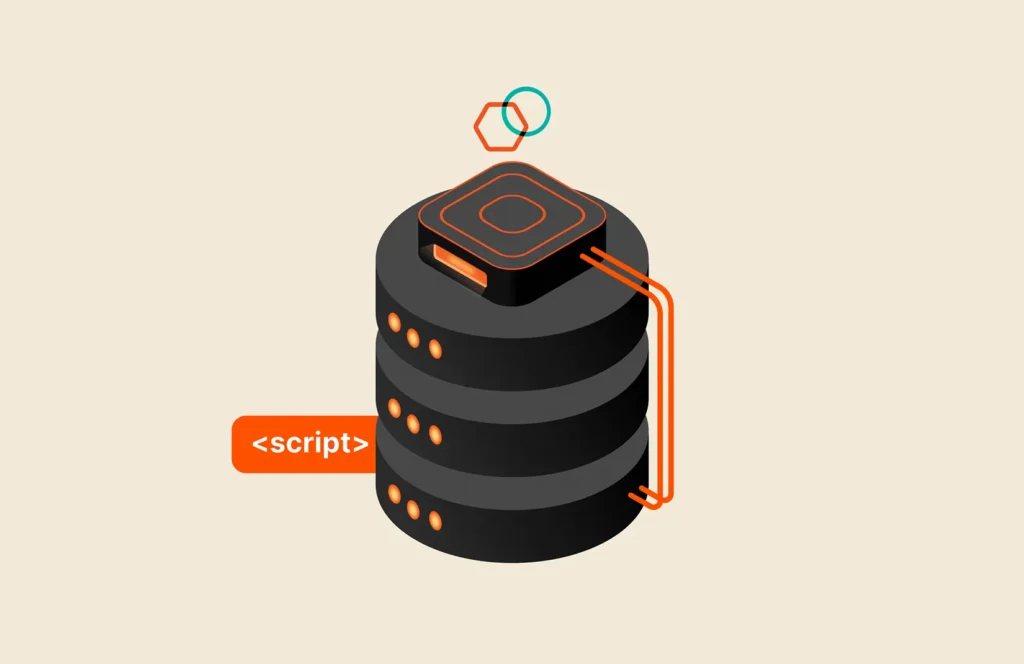In this post, I’ll show how you can run an Oracle 19c single instance database on Kubernetes using NFS persistent storage with Portworx proxy volumes.
For this post, I’ll be using Kubernetes v1.17.
[ root @ master – 1 ~ ] # kubectl version –short | awk -Fv ‘/Server Version: / {print $3}’
1.17.0
Portworx v2.7.0 with Portworx proxy volumes .
[ root @ master – 1 ~ ] # pxctl -v
pxctl version 2.7.0.0 – ccee71c
And a Pure Storage® FlashBlade ® NFS share to provide persistent NFS storage to an Oracle 19c containerized database .
How to Create an NFS Share
If you don’t already have an NFS share, you’ll need to create one. Using the FlashBlade UI, I’ve created a 1TB NFSv3 file system called z-k8-pstg within my lab.
Figure 1: Creating a file system in FlashBlade. Create the Oracle 19c Database Kubernetes Deployment My Kubernetes deployment creates the following:
Storage class
Deployment
Persistent volume claims (PVCs)
Service
[root@master-1 Oracle-on-Kubernetes]# kubectl apply -f 19c_deployment_PX-NFS.yaml
storageclass . storage . k8s . io / px – ora – sc – nfs created
deployment . apps / oracle19c – nfs created
persistentvolumeclaim / ora – data193 – nfs created
persistentvolumeclaim / ora – setup193 – nfs created
persistentvolumeclaim / ora – startup193 – nfs created
service / oracle19c – nfs created
Please note: I’ve reused the Kubernetes Namespace, Secret, and ConfigMap from my Oracle 19c Statefulset post, so you may need to review that post first.
Before we try to access our database, let’s take a look at the Kubernetes deployment.
Kubernetes Storage Class I’ve created a storage class using a Portworx ® provisioner with the following parameters:
Proxy_endpoint : The endpoint of the FlashBlade NFS shareProxy_nfs_exportpath : The FlashBlade NFS export nameMount_options : The NFS mount options for my container
kind : StorageClass
apiVersion : storage . k8s . io / v1
metadata :
name : px – ora – sc – nfs
provisioner : kubernetes . io / portworx – volume
parameters :
proxy_endpoint : “nfs://10.225.113.166”
proxy_nfs_exportpath : “/z-k8-pstg”
mount_options : “rw,bg,hard,nointr,tcp,vers=3,timeo=600,actimeo=0”
allowVolumeExpansion : true
Kubernetes Persistent Volume Claims The Portworx proxy volume supports accessing a specific sub-part within an NFS share. I’ve used this to provide the three volumes from a single NFS share for use by the Oracle container.
[ root @ master – 1 Oracle – on – Kubernetes ] # kubectl get pvc
NAME & nbsp ; & nbsp ; & nbsp ; & nbsp ; & nbsp ; & nbsp ; & nbsp ; & nbsp ; & nbsp ; & nbsp ; & nbsp ; & nbsp ; & nbsp ; & nbsp ; STATUS VOLUME & nbsp ; & nbsp ; & nbsp ; & nbsp ; & nbsp ; & nbsp ; & nbsp ; & nbsp ; & nbsp ; & nbsp ; & nbsp ; & nbsp ; & nbsp ; & nbsp ; & nbsp ; & nbsp ; & nbsp ; & nbsp ; & nbsp ; & nbsp ; & nbsp ; & nbsp ; & nbsp ; & nbsp ; & nbsp ; & nbsp ; & nbsp ; & nbsp ; & nbsp ; & nbsp ; & nbsp ; CAPACITY ACCESS MODES STORAGECLASS & nbsp ; & nbsp ; & nbsp ; AGE
ora – data193 – nfs & nbsp ; & nbsp ; & nbsp ; Bound & nbsp ; pvc – fcb2adc5 – 89fa – 4c19 – b303 – 8bed4ebbabb2 100Gi & nbsp ; & nbsp ; & nbsp ; & nbsp ; & nbsp ; RWX & nbsp ; & nbsp ; & nbsp ; & nbsp ; px – ora – sc – nfs & nbsp ; & nbsp ; 27m
ora – setup193 – nfs & nbsp ; & nbsp ; Bound & nbsp ; pvc – 6de8599b – b4b6 – 4f99 – 8db1 – 37526f899876 & nbsp ; & nbsp ; 1Gi & nbsp ; & nbsp ; & nbsp ; & nbsp ; & nbsp ; RWX & nbsp ; & nbsp ; & nbsp ; & nbsp ; px – ora – sc – nfs & nbsp ; & nbsp ; 27m
ora – startup193 – nfs Bound & nbsp ; pvc – 6ca7d0d1 – 18e5 – 4412 – b951 – b1c893aadf57 & nbsp ; & nbsp ; 1Gi & nbsp ; & nbsp ; & nbsp ; & nbsp ; & nbsp ; RWX & nbsp ; & nbsp ; & nbsp ; & nbsp ; px – ora – sc – nfs & nbsp ; & nbsp ; 27m
If you want to confirm your PVC details, you can use kubectl get pvc/<pvc name> -o YAML or -o JSON , for example.
[root@master-1 ~]# kubectl get pvc/ora-data193-nfs -o YAML
1
2
3
4
5
6
7
8
9
10
11
12
13
14
15
16
17
18
19
20
21
22
23
24
25
26
27
28
29
30
31
32
33
34
35
36
37
38
39
apiVersion : v1
kind : PersistentVolumeClaim
metadata :
annotations :
kubectl . kubernetes . io / last – applied – configuration : |
{ “apiVersion” : “v1” , “kind” : “PersistentVolumeClaim” , “metadata” : { “annotations” :
{ “px/proxy-nfs-subpath” : “/oradata” } , “labels” : { “app” : “database” , “version” : “19.3.0.1” } ,
“name” : “ora-data193-nfs” , “namespace” : “oracle-namespace” } , “spec” : { “accessModes” : [ “ReadWriteMany” ] ,
“resources” : { “requests” : { “storage” : “100Gi” } } , “storageClassName” : “px-ora-sc-nfs” , “volumeMode” : “Filesystem” } }
pv . kubernetes . io / bind – completed : “yes”
pv . kubernetes . io / bound – by – controller : “yes”
px / proxy – nfs – subpath : / oradata
volume . beta . kubernetes . io / storage – provisioner : kubernetes . io / portworx – volume
creationTimestamp : “2021-05-21T12:18:18Z”
finalizers :
– kubernetes . io / pvc – protection
labels :
app : database
version : 19.3.0.1
name : ora – data193 – nfs
namespace : oracle – namespace
resourceVersion : “4310310”
selfLink : / api / v1 / namespaces / oracle – namespace / persistentvolumeclaims / ora – data193 – nfs
uid : fcb2adc5 – 89fa – 4c19 – b303 – 8bed4ebbabb2
spec :
accessModes :
– ReadWriteMany
resources :
requests :
storage : 100Gi
storageClassName : px – ora – sc – nfs
volumeMode : Filesystem
volumeName : pvc – fcb2adc5 – 89fa – 4c19 – b303 – 8bed4ebbabb2
status :
accessModes :
– ReadWriteMany
capacity :
storage : 100Gi
phase : Bound
Alternatively, you can use kubectl describe pvc/<pvc name> .
1
2
3
4
5
6
7
8
9
10
11
12
13
14
15
16
17
18
19
20
21
[ root @ master – 1 Oracle – on – Kubernetes ] # kubectl describe pvc/ora-data193-nfs
Name : & nbsp ; & nbsp ; & nbsp ; & nbsp ; & nbsp ; & nbsp ; & nbsp ; & nbsp ; & nbsp ; ora – data193 – nfs
Namespace : & nbsp ; & nbsp ; & nbsp ; & nbsp ; oracle – namespace
StorageClass : & nbsp ; px – ora – sc – nfs
Status : & nbsp ; & nbsp ; & nbsp ; & nbsp ; & nbsp ; & nbsp ; & nbsp ; Bound
Volume : & nbsp ; & nbsp ; & nbsp ; & nbsp ; & nbsp ; & nbsp ; & nbsp ; pvc – fcb2adc5 – 89fa – 4c19 – b303 – 8bed4ebbabb2
Labels : & nbsp ; & nbsp ; & nbsp ; & nbsp ; & nbsp ; & nbsp ; & nbsp ; app = database
version = 19.3.0.1
Annotations : & nbsp ; & nbsp ; kubectl . kubernetes . io / last – applied – configuration :
{ “apiVersion” : “v1” , “kind” : “PersistentVolumeClaim” , “metadata” : { “annotations” : {
“px/proxy-nfs-subpath” : “/oradata” } , “labels” : { “app” : “database” . . .
pv . kubernetes . io / bind – completed : yes
pv . kubernetes . io / bound – by – controller : yes
px / proxy – nfs – subpath : / oradata
volume . beta . kubernetes . io / storage – provisioner : kubernetes . io / portworx – volume
Finalizers : & nbsp ; & nbsp ; & nbsp ; [ kubernetes . io / pvc – protection ]
Capacity : & nbsp ; & nbsp ; & nbsp ; & nbsp ; & nbsp ; 100Gi
Access Modes : & nbsp ; RWX
VolumeMode : & nbsp ; & nbsp ; & nbsp ; Filesystem
Mounted By : & nbsp ; & nbsp ; & nbsp ; oracle19c – nfs – 68bd675554 – 9bmlj
Events :
In the example above, you can see the Access Modes line and the pod name on the Mounted By line.
Access Modes Before we move on, you may have noticed that the Access Mode is RWX . This is possible because I’m using NFS, which can provide a shared file system. There are three types of access modes:
ReadWriteOnce (RWO): The volume can be mounted as read-write by a single node.
ReadOnlyMany (ROX): The volume can be mounted read-only by many nodes.
ReadWriteMany (RWX): The volume can be mounted as read-write by many nodes.
A PersistentVolume can be mounted on a host in any way supported by the resource provider.
Kubernetes Pod Let’s confirm the pod name with kubectl get pod .
[ root @ master – 1 Oracle – on – Kubernetes ] # kubectl get pods
NAME & nbsp ; & nbsp ; & nbsp ; & nbsp ; & nbsp ; & nbsp ; & nbsp ; & nbsp ; & nbsp ; & nbsp ; & nbsp ; & nbsp ; & nbsp ; & nbsp ; & nbsp ; & nbsp ; & nbsp ; & nbsp ; & nbsp ; & nbsp ; & nbsp ; & nbsp ; & nbsp ; & nbsp ; & nbsp ; & nbsp ; & nbsp ; & nbsp ; READY & nbsp ; & nbsp ; STATUS & nbsp ; & nbsp ; & nbsp ; RESTARTS & nbsp ; & nbsp ; AGE
oracle19c – nfs – 68bd675554 – 9bmlj & nbsp ; 1 / 1 & nbsp ; & nbsp ; & nbsp ; & nbsp ; Running & nbsp ; & nbsp ; 0 & nbsp ; & nbsp ; & nbsp ; & nbsp ; & nbsp ; & nbsp ; & nbsp ; & nbsp ; & nbsp ; 22m
Kubernetes Log Now that you know the pod name, you can watch the database creation with kubectl logs <pod> –follow , for example.
1
2
3
4
5
6
7
8
9
10
11
12
13
14
15
16
17
18
19
20
21
22
23
24
25
26
27
28
29
30
31
32
33
34
35
36
37
38
[ root @ master – 1 Oracle – on – Kubernetes ] # kubectl logs pods/oracle19c-nfs-68bd675554-9bmlj –follow
[ 2021 : 05 : 21 12 : 18 : 21 ] : Acquiring lock on / opt / oracle / oradata / . ORCL . create _ lck
[ 2021 : 05 : 21 12 : 18 : 21 ] : Lock acquired on / opt / oracle / oradata / . ORCL . create _ lck
[ 2021 : 05 : 21 12 : 18 : 21 ] : Holding on to the lock using / tmp / . ORCL . create_lck
ORACLE EDITION : ENTERPRISE
ORACLE PASSWORD FOR SYS , SYSTEM AND PDBADMIN : Kube #2020
LSNRCTL for Linux : Version 19.0.0.0.0 – Production on 21 – MAY – 2021 12 : 18 : 22
Copyright ( c ) 1991 , 2019 , Oracle . & nbsp ; All rights reserved .
Starting / opt / oracle / product / 19c / dbhome_1 / bin / tnslsnr : please wait . . .
TNSLSNR for Linux : Version 19.0.0.0.0 – Production
System parameter file is / opt / oracle / product / 19c / dbhome_1 / network / admin / listener . ora
Log messages written to / opt / oracle / diag / tnslsnr / oracle19c – nfs – 68bd675554 – 9bmlj / listener / alert / log . xml
Listening on : ( DESCRIPTION = ( ADDRESS = ( PROTOCOL = ipc ) ( KEY = EXTPROC1 ) ) )
Listening on : ( DESCRIPTION = ( ADDRESS = ( PROTOCOL = tcp ) ( HOST = 0.0.0.0 ) ( PORT = 1521 ) ) )
Connecting to ( DESCRIPTION = ( ADDRESS = ( PROTOCOL = IPC ) ( KEY = EXTPROC1 ) ) )
STATUS of the LISTENER
— — — — — — — — — — — —
Alias & nbsp ; & nbsp ; & nbsp ; & nbsp ; & nbsp ; & nbsp ; & nbsp ; & nbsp ; & nbsp ; & nbsp ; & nbsp ; & nbsp ; & nbsp ; & nbsp ; & nbsp ; & nbsp ; & nbsp ; & nbsp ; & nbsp ; & nbsp ; LISTENER
Version & nbsp ; & nbsp ; & nbsp ; & nbsp ; & nbsp ; & nbsp ; & nbsp ; & nbsp ; & nbsp ; & nbsp ; & nbsp ; & nbsp ; & nbsp ; & nbsp ; & nbsp ; & nbsp ; & nbsp ; & nbsp ; TNSLSNR for Linux : Version 19.0.0.0.0 – Production
Start Date & nbsp ; & nbsp ; & nbsp ; & nbsp ; & nbsp ; & nbsp ; & nbsp ; & nbsp ; & nbsp ; & nbsp ; & nbsp ; & nbsp ; & nbsp ; & nbsp ; & nbsp ; 21 – MAY – 2021 12 : 18 : 22
Uptime & nbsp ; & nbsp ; & nbsp ; & nbsp ; & nbsp ; & nbsp ; & nbsp ; & nbsp ; & nbsp ; & nbsp ; & nbsp ; & nbsp ; & nbsp ; & nbsp ; & nbsp ; & nbsp ; & nbsp ; & nbsp ; & nbsp ; 0 days 0 hr . 0 min . 0 sec
Trace Level & nbsp ; & nbsp ; & nbsp ; & nbsp ; & nbsp ; & nbsp ; & nbsp ; & nbsp ; & nbsp ; & nbsp ; & nbsp ; & nbsp ; & nbsp ; & nbsp ; off
Security & nbsp ; & nbsp ; & nbsp ; & nbsp ; & nbsp ; & nbsp ; & nbsp ; & nbsp ; & nbsp ; & nbsp ; & nbsp ; & nbsp ; & nbsp ; & nbsp ; & nbsp ; & nbsp ; & nbsp ; ON : Local OS Authentication
SNMP & nbsp ; & nbsp ; & nbsp ; & nbsp ; & nbsp ; & nbsp ; & nbsp ; & nbsp ; & nbsp ; & nbsp ; & nbsp ; & nbsp ; & nbsp ; & nbsp ; & nbsp ; & nbsp ; & nbsp ; & nbsp ; & nbsp ; & nbsp ; & nbsp ; OFF
Listener Parameter File & nbsp ; & nbsp ; / opt / oracle / product / 19c / dbhome_1 / network / admin / listener . ora
Listener Log File & nbsp ; & nbsp ; & nbsp ; & nbsp ; & nbsp ; & nbsp ; & nbsp ; & nbsp ; / opt / oracle / diag / tnslsnr / oracle19c – nfs – 68bd675554 – 9bmlj / listener / alert / log . xml
Listening Endpoints Summary . . .
( DESCRIPTION = ( ADDRESS = ( PROTOCOL = ipc ) ( KEY = EXTPROC1 ) ) )
( DESCRIPTION = ( ADDRESS = ( PROTOCOL = tcp ) ( HOST = 0.0.0.0 ) ( PORT = 1521 ) ) )
The listener supports no services
The command completed successfully
Prepare for db operation
8 % complete
. . .
The Oracle base remains unchanged with value / opt / oracle
#########################
DATABASE IS READY TO USE
#########################!
Kubernetes Service Use kubectl get svc or service to expose the Oracle listener port.
[ root @ master – 1 Oracle – on – Kubernetes ] # kubectl get svc
NAME & nbsp ; & nbsp ; & nbsp ; & nbsp ; & nbsp ; & nbsp ; & nbsp ; & nbsp ; & nbsp ; & nbsp ; & nbsp ; TYPE & nbsp ; & nbsp ; & nbsp ; & nbsp ; & nbsp ; & nbsp ; CLUSTER – IP & nbsp ; & nbsp ; & nbsp ; & nbsp ; EXTERNAL – IP & nbsp ; & nbsp ; PORT ( S ) & nbsp ; & nbsp ; & nbsp ; & nbsp ; & nbsp ; & nbsp ; & nbsp ; & nbsp ; & nbsp ; & nbsp ; & nbsp ; & nbsp ; & nbsp ; & nbsp ; & nbsp ; & nbsp ; & nbsp ; & nbsp ; & nbsp ; & nbsp ; & nbsp ; & nbsp ; & nbsp ; & nbsp ; AGE
oracle19c – nfs & nbsp ; & nbsp ; NodePort & nbsp ; & nbsp ; 10.96.1.196 & nbsp ; & nbsp ; & nbsp ; & lt ; none & gt ; & nbsp ; & nbsp ; & nbsp ; & nbsp ; & nbsp ; & nbsp ; & nbsp ; 1521 : 30637 / TCP , 5500 : 30645 / TCP & nbsp ; & nbsp ; 16m
Database Test Now that the Oracle 19c database is running within a container, let’s try to access it.
1
2
3
4
5
6
7
8
9
10
11
12
13
14
15
16
17
18
19
% sqlplus system / Kube #2020@//master-1:30637/ORCL @database_details
SQL* Plus : Release 19.0.0.0.0 – Production on Fri May 21 15 : 17 : 59 2021
Version 19.3.0.0.0
Copyright ( c ) 1982 , 2019 , Oracle . & nbsp ; All rights reserved .
Last Successful login time : Fri May 21 2021 15 : 17 : 36 + 01 : 00
Connected to :
Oracle Database 19c Enterprise Edition Release 19.0.0.0.0 – Production
Version 19.3.0.0.0
Current Time & nbsp ; & nbsp ; : 21 / 05 / 21 14 : 18 : 00
Database Details
=== === === === === === === === === === === === === === === ==
Hostname & nbsp ; & nbsp ; & nbsp ; & nbsp ; & nbsp ; & nbsp ; : oracle19c – nfs – 68bd675554 – 9bmlj
Database Name & nbsp ; : ORCL
Date Created & nbsp ; & nbsp ; : 21 / 05 / 21 13 : 51 : 31
Date Started & nbsp ; & nbsp ; : 21 / 05 / 21 14 : 08 : 35
Resetlogs Date : 21 / 05 / 21 13 : 51 : 35
DB Status & nbsp ; & nbsp ; & nbsp ; & nbsp ; & nbsp ; : OPEN
Space Allocated : & nbsp ; & nbsp ; & nbsp ; 1.70 GB
Space Used & nbsp ; & nbsp ; & nbsp ; & nbsp ; : & nbsp ; & nbsp ; & nbsp ; 1.68 GB
Summary In this post, I’ve shared how you can use Portworx proxy volumes to present external NFS storage to a Kubernetes cluster to provide persistent storage to an Oracle 19c database.
Interested in testing out proxy volumes? Try Portworx for free or get the Forever Free edition of Portworx Essentials.
Finally, if you’d like to try this out for yourself, you can find the Kubernetes manifests in my GitHub repository .

![]()






